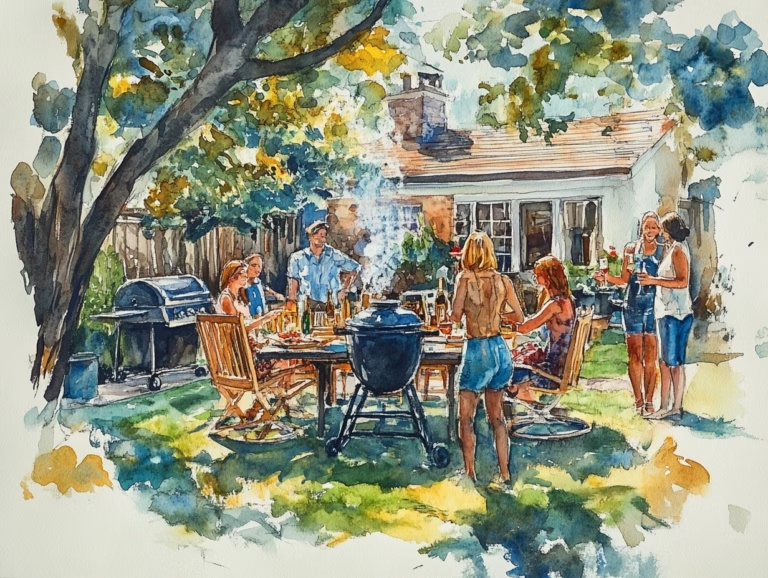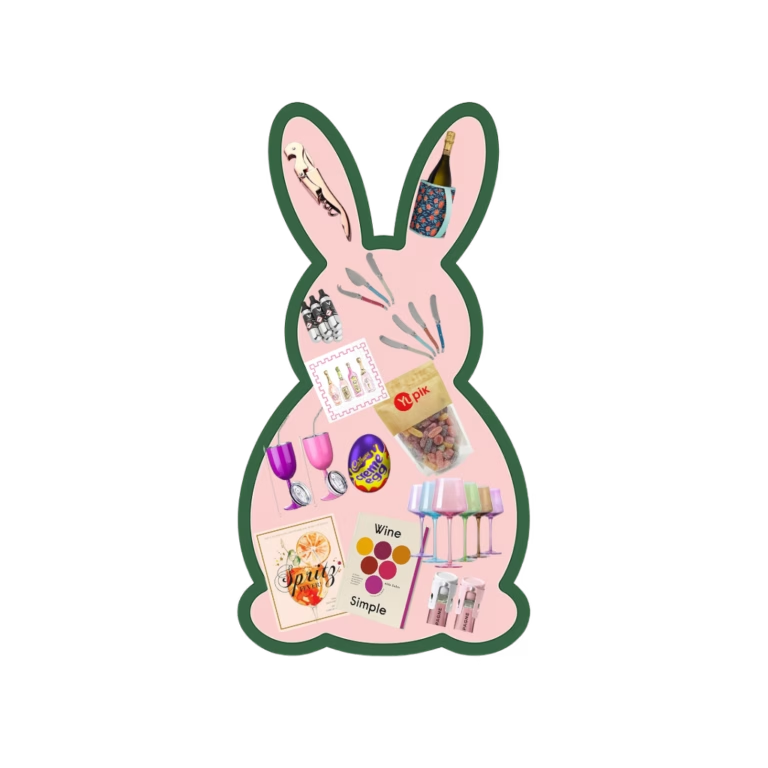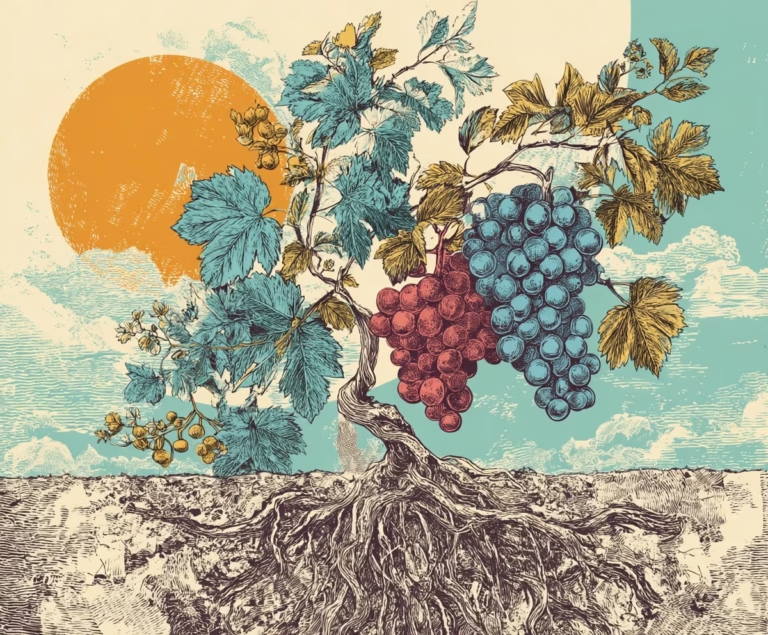(Bud)breaking It Down: The Lifecycle of a Grapevine
Bud break--the first signs of tiny green leaves peeking out from bare vines mean spring’s official arrival in wine country. It marks the very start of the wine magic that ends in your glass. So, what happens next? Let’s walk through the full grapevine lifecycle—starting right now in early spring—and see what the vines are up to each step of the way.

My Instagram feed has officially blossomed with many California favorites—, Matthiasson, Stags’ Leap, and Duckhorn among them—all sharing the same thing fuzzy green buds. That means one thing: bud break meaning those first signs of tiny green leaves peeking out from bare vines mean spring’s official arrival in wine country. Bud Break is something to celebrate. It marks the very start of the wine magic that ends in your glass. So, what happens next? Let’s walk through the full grapevine lifecycle—starting right now in early spring—and see what the vines are up to each step of the way.
While vines go through the same lifecycle all over, depending on things like climate, elevation, grape variety, and whether you’re in the Northern or Southern Hemisphere, the calendar can look pretty different.

- More sun and warmth → earlier growth and ripening.
- Cooler, wetter areas → later starts, slower ripening, and (sometimes) even better flavor development
We’ll stick with California’s timeline for this but offer some tips for how the timing can vary by region.
The Cycle of Life
1. Bud Break (March – April)

Bud break means the time when dormant vines begin to stir. You’ll see little buds swell, then burst open into baby green leaves and shoots. It’s adorable—and important. This is the moment when the vine starts photosynthesizing again after its winter nap.
In California, bud break typically starts in late March or early April, but timing can vary based on:
- Temperature: Warm winters bring earlier bud break.
- Variety: Early-ripening grapes like Chardonnay and Pinot Noir wake up before later types like Cabernet Sauvignon.
- Location: Warmer inland areas like Napa Valley tend to bud out earlier than cooler coastal zones like Sonoma Coast or Santa Barbara.
The danger? A late spring frost can zap all this new growth in a snap, so vineyard crews are watching the weather like hawks right now.
2. Flowering (May – June)

About 6–8 weeks after bud break, vines start to flower. The blossoms are teeny-tiny and not particularly showy, but they’re crucial. This is when self-pollination happens, setting the stage for how much fruit the vine will produce.
Good weather is everything during flowering—too much rain or wind can interfere and reduce the number of berries that form. When it goes well, the vineyard smells subtly sweet, and you can spot delicate white blossoms nestled between the leaves.
3. Fruit Set (June)

Successful flowers turn into itty-bitty grapes, and now the real fruit begins to take shape. This stage is called fruit set, and it gives growers their first peek at the year’s potential yield.The baby grapes are still small, green, and super firm.
If the weather during flowering was patchy, you might see uneven cluster development—what the French call millerandage (aka “hens and chicks”).
4. Veraison (July – August)

Veraison is when the vineyard goes from green to gorgeous. Grapes start changing color—red varieties shift to deep purple, while white grapes soften and turn golden.
This is when things get real. Sugar builds, acidity drops, and those juicy flavors start to develop. Winemakers are now fully in countdown mode, monitoring the vines constantly to fine-tune the ripening process.
5. Harvest (August – October)

All the drama of the growing season leads to this: harvest. Grapes are hand-picked (or machine-harvested) at just the right moment, depending on the winemaker’s goals.
- Sparkling wines are picked first, typically in August, for crisp acidity.
- White wines come next.
- Big reds like Cabernet hang longer to build flavor and structure—sometimes into late October.
In Paso Robles, things kick off early, thanks to hot days and cool nights. Up north in Mendocino or Anderson Valley, harvest is more laid back, stretching into fall.
6. Dormancy (November – February)

After all the hustle, the vines need to chill out. Leaves fall, the vines go bare, and they take a well-deserved nap.
This period is critical, even though it looks like nothing’s happening. The vines are storing up energy for next year, and growers are busy pruning, planting cover crops, and prepping the soil.
Here’s a cheat sheet to help you remember what’s happening when (in California):
| Stage | Timing | Process |
| Bud Break | March to April | Dormant buds swell and shoots emerge |
| Flowering | May to June | Tiny flowers bloom and self-pollinate |
| Fruit Set | June | Pollinated flowers form tiny green berries |
| Verasion | July to August | Grapes begin ripening and change color |
| Harvest | August to October | Grapes reach ripeness and are picked, leaves may start turning |
| Dormancy | November to February | Bare vines rest and store energy for the next season |
A Global Affair
While the stages are the same everywhere, the timing depends a lot on climate and hemisphere:

- France & Italy: Cooler weather pushes everything back a bit. Bud break is usually in April, and harvest can run into late October—especially in Bordeaux or Barolo.
- Australia & New Zealand: Flip the calendar! Being in the Southern Hemisphere, bud break happens around September and harvest wraps up by April.
- Chile & Argentina: Similar to Australia’s timing, though high-altitude vineyards like those in Mendoza can have a longer, more gradual growing season.
- Pacific Northwest (Oregon, Washington): Bud break starts later (often in April), and rain can pose more challenges during flowering and harvest.
Every vintage is a story—and it all begins with a single bud. From bud break to bottle, there’s so much love, labor, and literal weather watching that goes into each sip. So next time you pop a cork, toast to those tiny green shoots that started it all.
Celebrate with them:

Stag’s Leap, Napa Valley Chardonnay ($30): A Chardonnay for Chardonnay skeptics (I promise!), there’s absolutely nothing cloying or buttery about this Napa Valley Chard. On the nose, it gives ripe pear, lemon curd, and a whisper of vanilla from its time in oak. There’s also a hint of toasted almond and just a flicker of tropical pineapple if you pay close attention. It’s crafted from grapes grown in the cooler southern end of Napa Valley, where foggy mornings and breezy afternoons help the fruit keep its bright acidity. After harvest, the wine is fermented in French oak barrels—about a third of them new—then aged “sur lie” (aka the yummy, creamy yeast particles) to give it that signature silky texture and elegant depth.There’s a nice lift of acidity that keeps it all balanced—bright but creamy, rich but not overdone.

Duckhorn, Napa Valley Merlot ($35): Duckhorn’s been championing Merlot since the ‘70s (way before it was cool again), and this bottle shows exactly why. The grapes come from a mix of estate and select Napa Valley vineyards, and the wine is aged in French oak—mostly neutral, with just a few new barrels to add depth without taking over. On the nose, you get dark purple fruits, like cherry, plum, and blackberry compote, layered with baking spice, cocoa powder, and just a hint of cedar. The tannins are silky but structured, giving it enough backbone to pair beautifully with food, but smooth enough to sip solo. It smells like the coziest fall evening. And while the mind might be suggestible, what with its signature duck logo, it pairs perfectly with a roast duck *chef’s kiss.*

Matthiasson, Cressida Vineyard Pinot Noir ($65): This Pinot light on its feet, but full of feeling. Grown in the breezy Petaluma Gap at the sustainably farmed Cressida Vineyard, this wine is all about restraint and grace. The cool climate keeps things fresh, and the Matthiassons keep their touch light in the cellar—native yeast, minimal new oak, and gentle extraction—so the fruit gets to speak for itself. On the nose, it’s delicate and lovely: wild strawberry, rose petal, a bit of pomegranate, and that earthy forest floor note that makes Pinot people swoon. There’s a whisper of spice too—like crushed pink peppercorns and dried herbs. The palate is silky and precise, with vibrant red fruit, a splash of cranberry, and a mineral backbone that gives it elegance without excess (just like you!).



